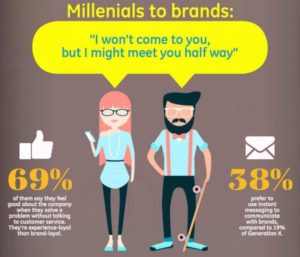- ROI: Selectively generous users. - 17 March, 2020
- Shopping online isn’t just to buy - 17 July, 2019
Shopping online isn’t just to buy
Shopping online is booming. E-commerce spreads, online sales volume grows, and sectors that have traditionally been reluctant to enter the digital business ecosystem are now convinced to advocate for their e-Commerce platforms.
The data confirm that the turnover driven by e-commerce in Spain grew in the third quarter of 2017 by 26.2 compared to the same period in 2016. In absolute numbers, that means EUR 7.785 million in Q3 2017 against EUR 6,167 million in Q3 2016(CMC data – National Market and Competition Commission).
The great advantages of e-commerce are ease, practicality and ubiquity.
That being the case, e-commerce would be pure logistics. Impeccable logistics combined with a reliable and flexible technological infrastructure, an adequate staging and, of course, the corresponding promotional strategy to publicise products, offers and rewards programs. And that’s it? No. Buying online is not a mere commodity. We don’t settle for that.
There is no transaction without emotion.
The reason why not all online platforms succeed is the same reason that not all physical merchants succeed: because people do not want to buy.
If we could not buy, we wouldn’t. If we buy it is because we feel that there is a dialogue that, when it is satisfactory to us, results in exchange. The shopping process, or the sales process, or the buy-sell process, is a conversation, a relationship. And we are all selective in our relationships.
To understand why and how we buy things, the significant variable is not what we need, but how we are.
The latest study published by the consultancy
Euromonitor
(May 2018), has an impact on the importance of categorizing consumers by establishing variables that are defined by their lifestyle and not just by their socio-demographic traits.
That’s how we are, that’s how we relate, that’s how we buy.
Based on these variables, and with a field of study that includes 100 countries, the Study identifies 8 consumer profiles:
Taking these consumer profiles, in which the generational component (Generation Z, Millennials, Generation X and Babby Boomers) is of significant weight, helping us to identify behavioural patterns in your search and shopping habits.
ROPO(ResearchOnline / Offline – Purchase Online / Offline) behaviour is a determining variable when addressing a Social Media presence strategy that has sales objectives.
As we rise in the age range, taking into account the generational skills, we move from net online shopping profiles to mainly offline shopping profiles.
- Generation Z and Millennials: mainly digital ROPO
- Generation X: Hybrid ROPO (ON/OFF)
- Baby Boomers: basically analog ROPO
If we include ROPO behavior in the analysis of the 8 categories of consumers identified in the Euromonitor study we obtain these patterns of behavior:
Buying online is the realization of a trust relationship.
Shopping is trust. But confidence does not endure through inertia, it requires constant stimulus. We, therefore, return to the importance of keeping a relationship alive.
The first time someone buys takes a risk. Think as much about what you can earn as you can lose. We rarely take a high risk on first purchase at a new location or on the first purchase of a new product or brand. We tend to be cautious “just in case.”
The risk we are able to take is proportional to the trust that the one who sells us has been able to build with us. The value of the brand is decisive. But, even accepting that trust in the brand is total, a purchase does not transform a buyer into a customer.
That brings us to the other great territory of online shopping: loyalty programs.
Talking about loyalty programs is, again, talking about relationships. Every great journey starts with a small first step. And every new step counts.
Our loyalty also depends on how we are and what we expect from a relationship. If the proposal is not accurate, easy to understand, with clearly defined benefits and with a high level of customization will not work.
The infographic below has been prepared by Consultant 3CInteractive for her Loyalty Programs 2017 Report
Shopping online is rewarding if it makes us feel unique.
Conversation with people on social media daily teaches us that affinity is built with empathy.
It is common to see Social Selling strategies that are embodied on social media as if the purchase were a dissociated act from the conversation. We talk on the one hand and, on the other, from time to time, we do a “call to action” for our followers to buy.
To understand that a Community moves by affinity, by cooperation and by trust, should make us think that interaction, any kind of communication, occurs when the person decides that we propose something with him in mind, not just us.
Of course, users assume that a Brand converses by interest. However, the way Brands capture that interest is what causes users’ barriers to rise or lower to click “buy”.
Immediate rewards, in the form of an offer or discount, and, above all, continuity rewards, in the form of loyalty programs, must be formulated as personal.
The user expects the Brand to worry about knowing you (as intrusive as possible), understanding you and finally benefiting you in the way that best suits your features.
We’re all special. We all feel unique. The Social Media environment allows us to materialize that ubiquitous mantra of “the user always in the centre”. Know that the digital consumer is demanding, let’s talk to him. That’s what you expect from us.





















